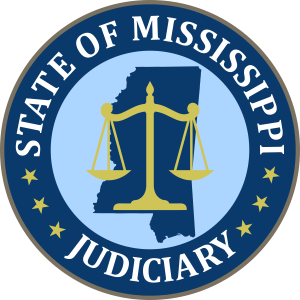Traumatic brain injuries (TBIs) resulting from accidents are always serious and can have devastating consequences. Among these, diffuse axonal injuries (DAI) stand out as particularly severe and life-altering. At Brad Morris Law Firm, PLLC, we understand the challenges faced by DAI survivors and their families. In this guide, we’ll delve into what DAI entails, its causes, symptoms, diagnosis, treatment, and the legal aspects surrounding such injuries.
What is a Diffuse Axonal Injury?
A DAI falls under the category of diffuse brain injuries, which involve damage spread across a wide area rather than being localized to one specific spot. The term “axonal” refers to the nerve fibers called axons, crucial for transmitting electrical impulses in the brain. In DAI, these axons are sheared or torn due to the brain’s rapid movement inside the skull during a traumatic impact, leading to widespread damage.
Causes of Diffuse Axonal Injury
DAI commonly occurs after head trauma, where the brain rapidly shifts back and forth inside the skull due to acceleration or deceleration forces. High-speed collisions, such as those in truck accidents, often result in severe DAIs due to the substantial force of impact. Other causes include sports-related accidents, falls, violent assaults, and shaken baby syndrome.
Brad Morris
Attorney





Symptoms and Diagnosis
Symptoms of DAI can vary widely, ranging from loss of consciousness and coma to disorientation, headaches, nausea, and fatigue. Diagnosing DAI can be challenging, especially if the patient is unconscious. Medical professionals typically use magnetic resonance imaging (MRI), computed tomography (CT) scans, evoked potentials, and electroencephalograms (EEGs) to assess brain damage and confirm the diagnosis.
Grades of Diffuse Axonal Injury
DAIs are classified into three grades based on severity and the extent of brain damage. Grade 1 involves microscopic changes in white matter, while Grade 2 exhibits focal lesions in specific areas like the corpus callosum. Grade 3, the most severe, presents additional lesions on the brainstem and often results in prolonged unconsciousness.
Treatment and Rehabilitation
Immediate treatment for DAI focuses on reducing brain swelling and preventing further damage. While surgery cannot repair DAI, rehabilitation plays a crucial role in helping survivors regain function and improve quality of life. Multidisciplinary teams comprising doctors, therapists, and specialists tailor individualized rehabilitation plans, which may include speech therapy, physical therapy, and counseling.
Prognosis and Long-term Impacts
The prognosis for DAI survivors varies widely depending on the severity of the injury. While some may recover partially with intensive rehabilitation, others may face lifelong complications, including cognitive deficits, physical impairments, and emotional challenges. Severe cases may result in permanent disability or even death.
Legal Considerations and Compensation
For individuals who have suffered DAI due to negligence, pursuing legal action may be necessary to obtain rightful compensation. At Brad Morris Law Firm, PLLC, our experienced attorneys focus on personal injury cases, including those involving traumatic brain injuries. We understand the complexities of DAI litigation and work tirelessly to ensure our clients receive fair compensation for their pain, suffering, and medical expenses.
Frequently Asked Questions
What role does early intervention play in the treatment of diffuse axonal injuries?
Early intervention is crucial in mitigating the long-term effects of diffuse axonal injuries (DAI). Prompt medical attention can help stabilize the patient, reduce brain swelling, and prevent further damage. Initiating rehabilitation as soon as the patient’s condition allows can also improve outcomes by promoting neuroplasticity and functional recovery. By addressing symptoms early and implementing a comprehensive treatment plan, healthcare professionals can maximize the chances of DAI survivors achieving optimal recovery.
How do medical professionals differentiate between diffuse axonal injuries and other types of traumatic brain injuries?
Distinguishing between diffuse axonal injuries (DAI) and other traumatic brain injuries (TBIs) often requires a combination of clinical assessment, imaging studies, and diagnostic tests. While focal injuries, such as contusions, may be visible on imaging scans like CT and MRI, DAI may not always be immediately apparent. Medical professionals rely on characteristic symptoms, such as loss of consciousness, cognitive deficits, and neurological impairments, coupled with imaging findings to diagnose DAI accurately.
Related Videos
Steps of a Personal Injury Case
Will My Case Go To Trial?
What are the challenges associated with long-term care and support for individuals with severe diffuse axonal injuries?
Individuals who sustain severe diffuse axonal injuries (DAI) can require extensive long-term care and support due to the profound physical, cognitive, and emotional impairments they may experience. This can place significant strain on families and caregivers, who must navigate complex medical needs, rehabilitation programs, and financial burdens. Accessing appropriate resources, including specialized medical facilities, community services, and legal assistance, is essential in ensuring the best possible quality of life for DAI survivors and their families.
How do advancements in medical technology and research impact the diagnosis and treatment of diffuse axonal injuries?
Advances in medical technology and research continue to enhance our understanding of diffuse axonal injuries (DAI) and improve diagnostic capabilities and treatment options. Innovations in neuroimaging techniques, such as functional MRI and diffusion tensor imaging (DTI), provide greater insights into the underlying pathophysiology of DAI, enabling more accurate diagnosis and monitoring of brain changes over time. Additionally, ongoing research into neuroprotective strategies, regenerative therapies, and personalized rehabilitation protocols holds promise for optimizing outcomes and enhancing recovery for DAI survivors.
What legal considerations arise in cases involving diffuse axonal injuries caused by negligent parties?
In cases where diffuse axonal injuries (DAI) result from negligence, various legal considerations come into play. Establishing liability requires demonstrating that the responsible party breached their duty of care, leading to the injury. This may involve gathering evidence, consulting expert witnesses, and navigating complex legal proceedings. Compensation for DAI survivors typically includes medical expenses, lost income, pain and suffering, and future care needs. Working with experienced personal injury attorneys like those at Brad Morris Law Firm, PLLC, can help ensure that DAI survivors receive fair and just compensation for their damages.
How does the severity of the traumatic impact correlate with the prognosis of diffuse axonal injuries?
The severity of the traumatic impact is closely linked to the prognosis of diffuse axonal injuries (DAI). High-speed collisions and severe blows to the head are more likely to result in extensive brain damage and poorer outcomes for DAI survivors. Factors such as the duration of unconsciousness, the extent of neurological deficits, and the presence of secondary complications also influence prognosis. Early intervention, comprehensive rehabilitation, and ongoing medical support can help mitigate the adverse effects of severe DAI and improve long-term outcomes for survivors.
What support services are available for families and caregivers of individuals with diffuse axonal injuries?
Families and caregivers of individuals with diffuse axonal injuries (DAI) often require support services to cope with the challenges of caregiving and navigate the complexities of managing their loved one’s condition. Community organizations, support groups, and online forums provide valuable resources and peer support for families facing similar experiences. Additionally, counseling services, respite care, and caregiver training programs can help alleviate caregiver stress and enhance coping strategies. Accessing these support services is essential in promoting the well-being of both DAI survivors and their caregivers.
How do societal attitudes and perceptions towards traumatic brain injuries impact the experiences of individuals with diffuse axonal injuries?
Societal attitudes and perceptions towards traumatic brain injuries (TBIs), including diffuse axonal injuries (DAI), can significantly influence the experiences of survivors and their families. Stigma, misconceptions, and lack of awareness about the invisible nature of TBIs may contribute to feelings of isolation, frustration, and social exclusion among DAI survivors. Advocacy efforts, education initiatives, and public awareness campaigns play a crucial role in challenging stereotypes, promoting understanding, and fostering inclusive communities that support the needs and rights of individuals living with TBIs.
What role do advocacy organizations and legal advocacy groups play in raising awareness and advocating for the rights of individuals with traumatic brain injuries?
Advocacy organizations and legal advocacy groups play a vital role in raising awareness, advocating for policy changes, and protecting the rights of individuals with traumatic brain injuries (TBIs), including diffuse axonal injuries (DAI). These organizations work to amplify the voices of TBI survivors, provide education and resources to the public and policymakers, and promote initiatives that improve access to healthcare, support services, and legal protections. By advocating for systemic changes and addressing gaps in services, these organizations contribute to a more inclusive and supportive society for individuals affected by TBIs.
What preventative measures and safety protocols can individuals and organizations implement to reduce the incidence of traumatic brain injuries, including diffuse axonal injuries?
Preventing traumatic brain injuries (TBIs), including diffuse axonal injuries (DAI), requires a multi-faceted approach involving education, awareness, and implementation of safety protocols. Individuals can reduce their risk of TBIs by wearing seat belts, helmets, and protective gear, practicing safe driving habits, and avoiding high-risk activities. Organizations and policymakers play a crucial role in implementing regulations, improving infrastructure, and promoting workplace safety measures to prevent TBIs in various settings. By prioritizing injury prevention strategies and fostering a culture of safety, we can reduce the incidence and impact of TBIs on individuals and communities.
If you or a loved one has suffered a diffuse axonal brain injury (DAI) due to someone else’s negligence, it’s crucial to seek experienced legal representation to protect your rights and pursue rightful compensation. At Brad Morris Law Firm, PLLC, we advocate for individuals and families affected by traumatic brain injuries, including DAI.
Our dedicated team of attorneys understands the complexities of DAI cases and is committed to providing compassionate and effective legal representation every step of the way. We will work tirelessly to investigate your case, gather evidence, and fight for the compensation you deserve for medical expenses, lost income, pain and suffering, and future care needs. Don’t navigate the legal process alone. Contact Brad Morris Law Firm, PLLC today for a free consultation. Let us help you seek justice and rebuild your life after injury. Call or visit our website to schedule your consultation now. Your recovery and well-being are our top priorities.

